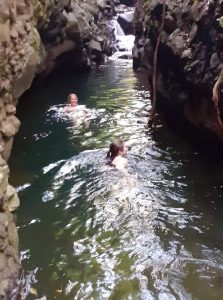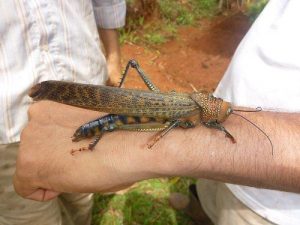Over J-term 2020, Dr. Lara Martin Lengel, School of Media and Communications, and I took 14 students to Costa Rica for a study abroad experience, under the auspices of a cross-listed course, HIST 4950/COMM 4060/HONS 4900, Cultural Studies in Costa Rica. After landing in San Jose, the capital, the group spent four days at the Costa Rica Animal Rescue Center in Turrúcares, in Costa Rica’s Central Valley.
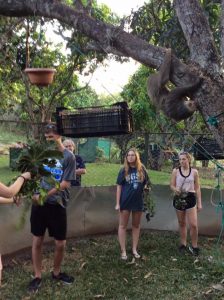 There, the students cared for animals including parrots, macaws, howler and spider monkeys, sloths, and kinkajous. We learned about the local flora and fauna from the Center staff, including Dr. Andreas Perez, the Center veterinarian. While at the Center, the group took day trips to Manuel Antonio National Park, and Volcan Irázu, Costa Rica’s highest volcano. A highlight of the Irázu trip was playing soccer on the side of the volcano.
There, the students cared for animals including parrots, macaws, howler and spider monkeys, sloths, and kinkajous. We learned about the local flora and fauna from the Center staff, including Dr. Andreas Perez, the Center veterinarian. While at the Center, the group took day trips to Manuel Antonio National Park, and Volcan Irázu, Costa Rica’s highest volcano. A highlight of the Irázu trip was playing soccer on the side of the volcano.
https://www.facebook.com/scott.martin.79827803/videos/10216052902617446/
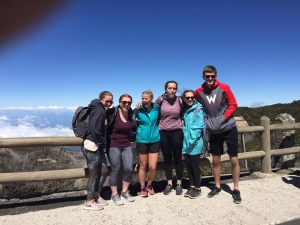
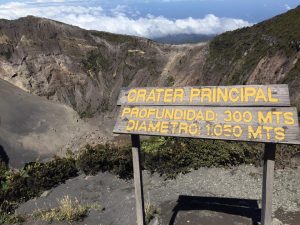
From Turrúcares, we went to the Central Pacific Coast, to Jacó, a tourist destination noted for its excellent surfing. There, we discussed Costa Rican history, sustainable tourism, and efforts to protect the region’s sea turtles. We also enjoyed Jacó’s beaches! After three days in Jacó, we traveled 50 km south to Playa Palo Seco, a beautiful, secluded island with the Pacific on one side and a mangrove river on the other. We learned from about the importance of mangroves to the environment, and in preventing storm surges from flooding the inland areas. A boat tour of the mangrove allowed the group to see native flora and fauna, including the mangrove trees themselves, spider monkeys, crabs, and fish.
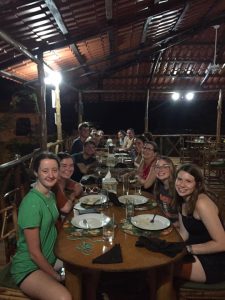
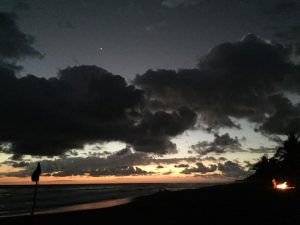
Leaving Playa Palo Seco, we proceeded into the Southern Pacific region, to visit a University of Costa Rica campus at Golfito. On the way, we toured the Finca 6, or Spheres Museum, a UNESCO World Heritage site. Costa Rica’s pre-Columbian indigenous people created a number of perfect stone spheres, ranging in size from a softball to three or four feet in diameter. They served as geographic signs, status symbols, and astronomical markers. Once in Golfito, our host, Dr. Randall Blanco, arranged an evening lecture on the environmental challenges facing the region, and the Golfo Dulce, a large gulf near the Panamanian border. The following day, Dr. Blanco arranged a boat tour of the gulf, which provided another trip highlight. During the tour, we passed through a pod of about 100 dolphins, frolicking and playing in the water.
https://www.facebook.com/scott.martin.79827803/videos/10216111264436455/
The next leg of our trip took us to Térraba, in a territory allotted to the Brörán people, an indigenous group in Costa Rica. We enjoyed traditional meals, learned how ceremonial masks are made, and learned about the challenges of preserving the Brörán language and culture. We also encountered the largest insect we’d seen in Costa Rica, tropidacris cristata, the Costa Rican giant flying grasshopper. Harmless, but unsettling! Before we left Térraba, we hiked to a mountain river protected by the Brörán ancestors, and were able to swim in the clearest, cleanest water imaginable.
After leaving Térraba, we traveled to the Orosi Valley, an area close to opportunities for whitewater rafting and ziplining. On a free day, some of the group went rafting, others ziplining and rappelling, while others came with Lara and me to the Guayabo National Monument, Costa Rica’s most important archaeological site. Guayabo, a major city from about 800 AD to 1400 AD, housed, in its heyday, 10,000 people. It boasted mounds with large conical structures, aqueducts, and an impressive stone causeway leading to the city.
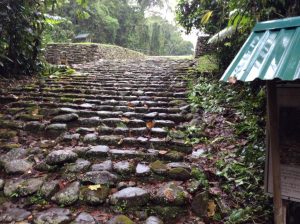
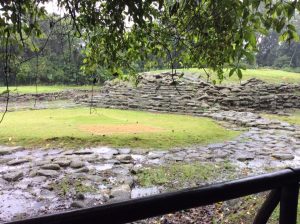
Our final destination was Alajuela, the site of the country’s largest airport, and home to Costa Rica’s national hero, Juan Santamaria. As a teenager, Santamaria fought to expel William Walker, an American adventurer who became president of Nicaragua in 1856 and attempted to annex more Central American land in which he hoped to reestablish slavery. A museum in Alajuela commemorates Santamaria, as well as other aspects of Costa Rican history. After the museum visit, we enjoyed a farewell dinner at Jalapeño Central, a Tex-Mex restaurant owned by a Colombian-American who grew up in Queens, New York.
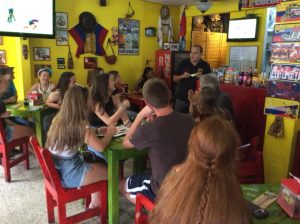
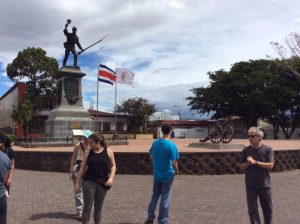
The trip was a great success. Everyone, including me, learned something about Costa Rica, or, through comparison, our own culture. Lara’s and my many previous visits to the country made it possible to visit places off the standard, touristic track, and learn something distinctive about Costa Rica. We plan to repeat this trip in January 2022; and we’ll keep everyone posted about our next venture. Pura Vida!

